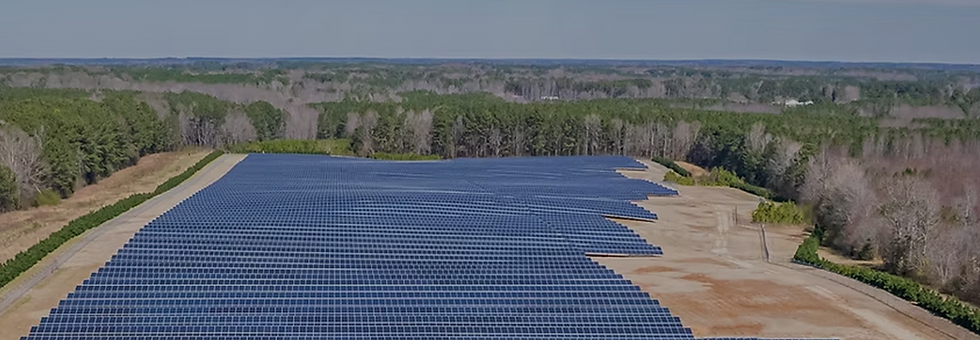
Frequently Asked Questions
Have questions? Find answers to commonly asked questions about SOL-R Global Infrastructure, our operations, and how we can assist you in your renewable energy endeavors.
FREQUENTLY ASKED QUESTIONS
I need to learn more
SOL-R Global Infrastructure is building a portfolio of land assets across many countries and rented to many different energy operators. This enables us to create an institutional-sized investment vehicle where the regulatory, technical and environmental risks are diversified away.
SOL-R Global Infrastructure does not operate solar farms. We are the landlords of solar farms. The solar farm operators are our tenants and we do not compete against our tenants.
SOL-R Global Infrastructure is a passive real-estate investor. We do not interfere with the solar farm operator’s energy-producing operations. If improvements are required to be made on the land, the solar farm operator funds these works himself.
SOL-R Global Infrastructure is a real estate investor which invests in the specific niche asset class of solar farm ground sites for yield. As such, the price we pay for land is mathematically calculated to get us our target yield. Although many parameters come into the equation, the rent paid by the solar farm is the most important one. But we also factor in acquisition costs, prevailing interest rates, the financial wherewithal of the tenant (or its parent company), the intrinsic value of the land should no solar farm be installed… etc.
Solar farm leases are for the very long term : they tend to be for durations in excess of 25 years with unilateral options to be benefit of the tenant to extend for 5 to 10 years. This means that any future use of the land by the owner is close to 35-45 years away.
If you rent the land, the positive, on top of getting a yearly income, is that you get keep your property. We would argue that, by not being able to do anything with the land for the next 35-45 years, this is a very tenuous positive. The negative is very real : you are exposed to paying income tax on each year’s rental income at a marginal income tax rate that is usually superior to the capital gains tax.
If you sell the land, the clear positive is that you immediately receive a large amount of money which will be taxed, if at all, at a capital gains tax rate that is almost always materially inferior to the income tax rate you would pay on rent. Additionally, your land is valued based on the rent that is paid by the solar farm tenant rather than based on its intrinsic worth (i.e. without a solar farm tenant). The negative is that the land is not yours anymore. Again, we would argue that is a very small negative because, renting the land (i.e. the alternative), also means not being able to do anything with the land for the next 35-45 years.
The tax arbitrage of selling vs. renting is very compelling. Suppose (i) the rental income is €100,000 per year, which is taxed on average at 40%, (ii) the capital gains tax rate on the proceeds of a sale is 20% and (iii) SOL-R Global Infrastructure buys the land for €1m (with a historical acquisition cost of €100,000). In this case, the seller receives €1,000,000 – (20% x (€ 1,000,000 - €100,000)) = €820,000 in net proceeds. This represents almost 14 years of the net rental income of (1-40%) x €100,000 = €60,000 if he had chosen not to sell.
If the solar farm operator cancels his lease once SOL-R Global Infrastructure has acquired the land, the former landowner is not impacted financially. You have no liability to SOL-R Global Infrastructure.
SOL-R Global Infrastructure also invests in land hosting wind turbines.
We buy the land which is rented. By virtue of owning the land, we are entitled to receive the rental income. A lease buyout is a transaction whereby the buyer acquires future rental flows from the seller without buying the land. We do not engage in these transactions.
SOL-R Global Infrastructure buys the full- property only. In countries where the usufruct and the naked property rights can be differentiated, we do not buy one or the other : we buy the full property only, i.e. the usufruct and the naked property together.
Solar farms may be authorized by the relevant authorities to operate only if solar panels are installed in such a way that some agricultural activity can still be undertaken (such as grazing, growing vegetables…). In such cases, the solar farm operator signs a contract with a farmer to execute the agricultural production. In many cases, this contract is signed with the former owner when he/she is involved in farming.
An owner may sell the land that hosts the solar farm to SOL-R Global Infrastructure but choose to continue owning adjacent lots (some of which may be devoted to farming for example). If the owner requires an easement through the land that SOL-R Global Infrastructure acquires to get to these adjacent lots, we will be amenable to entering into such arrangements if the easement does not interfere with the operation of the solar farm.
When the land is owned by multiple individuals (such as siblings), we buy out all owners to become the 100% owner of the land. SOL-R Global Infrastructure does not buy minority stakes in land.

